Table of Contents
Correlative conjunctions are word pairs like both…and, either…or, and not only…but also that connect two related ideas in a sentence. They make sentences clear and balanced by linking similar elements like subjects, objects, or clauses.
Learning correlative conjunctions helps in writing sentences that flow easily and express relationships effectively.
What Is a Correlative Conjunction?
A correlative conjunction is a pair of words that work together to link equal sentence elements, such as words, phrases, or clauses.
Common correlative conjunctions include:
- either…or
- neither…nor
- both…and
- not only…but also
- whether…or
Example Sentences:
- Either she will join us, or she will stay home.
- Both the movie and the book were excellent.
- He is not only talented but also hardworking.
Parallelism with coordinating conjunctions
Parallelism with coordinating conjunctions refers to the practice of using the same grammatical structure for elements connected by conjunctions like and, but, or, and nor. This helps to maintain clarity and balance in a sentence, making it easier to read and understand.
When you use coordinating conjunctions, make sure the words, phrases, or clauses on both sides of the conjunction are in the same form, whether they are nouns, verbs, adjectives, or phrases. Failing to do so can create confusion or disrupt the flow of the sentence.
- She loves singing, dancing, and acting.
- He is not only a great writer but also an excellent speaker.
- You can either join us for dinner or stay at home.
Correlative Conjunctions as Compound Subjects
Correlative conjunctions are pairs of words that work together to join equal parts of a sentence. Common examples include either…or, neither…nor, not only…but also, and both…and.
When these conjunctions act as compound subjects in a sentence, they combine two subjects, and the verb agrees with the part of the subject closer to it (known as the rule of proximity).
Key Rules:
1. Verb Agreement with Closest Subject:
The verb agrees in number (singular or plural) with the subject closer to it.
- Either the teacher or the students are attending the seminar.
(The verb ‘are’ agrees with ‘students’, which is plural.)
- Neither the students nor the teacher is attending the seminar.
(The verb ‘is’ agrees with ‘teacher’, which is singular.)
2. Maintaining Parallel Structure:
The elements joined by correlative conjunctions should be grammatically parallel.
- Correct: Both the manager and the assistant are present.
- Incorrect: Both the manager and the report is ready.
Example Sentences:
- Both John and Sarah are excellent musicians.
(Both subjects are plural, so the verb is plural.)
- Either the dog or the cat has knocked over the vase.
(The verb ‘has’ agrees with ‘cat,‘ the closer subject.)
- Neither the coach nor the players were satisfied with the result.
(The verb ‘were’ agrees with ‘players,‘ the closer subject.)
Examples of Correlative Conjunctions in Sentences
Correlative conjunctions work in pairs to connect two equal elements in a sentence. Below are examples using common correlative conjunctions:
1. Both…and
- Both Sarah and Emma love to read novels.
- Both the teacher and the students were excited about the trip.
2. Either…or
- You can either call me or send a message.
- Either John or his friends are responsible for this.
3. Neither…nor
- Neither the cat nor the dog is in the yard.
- Neither the manager nor the employees have completed the task.
4. Not only…but also
- Not only does he play guitar, but he also sings beautifully.
- Not only the movie but also the soundtrack was amazing.
5. Whether…or
- I don’t know whether he will attend or stay home.
- Whether you agree or disagree, the decision has been made.
6. As…as
- She is as talented as her brother.
- This painting is as valuable as the one in the museum.
7. No sooner…than
- No sooner had he arrived than the meeting started.
- No sooner did they announce the results than everyone started celebrating.
8. So…that
- She was so tired that she fell asleep immediately.
- The joke was so funny that everyone laughed for minutes.
9. Such…that
- It was such a beautiful day that we decided to go hiking.
- The cake was such a hit that everyone asked for the recipe.
10. Rather…than
- He prefers to walk rather than drive.
- I would stay home rather than go out in this weather.
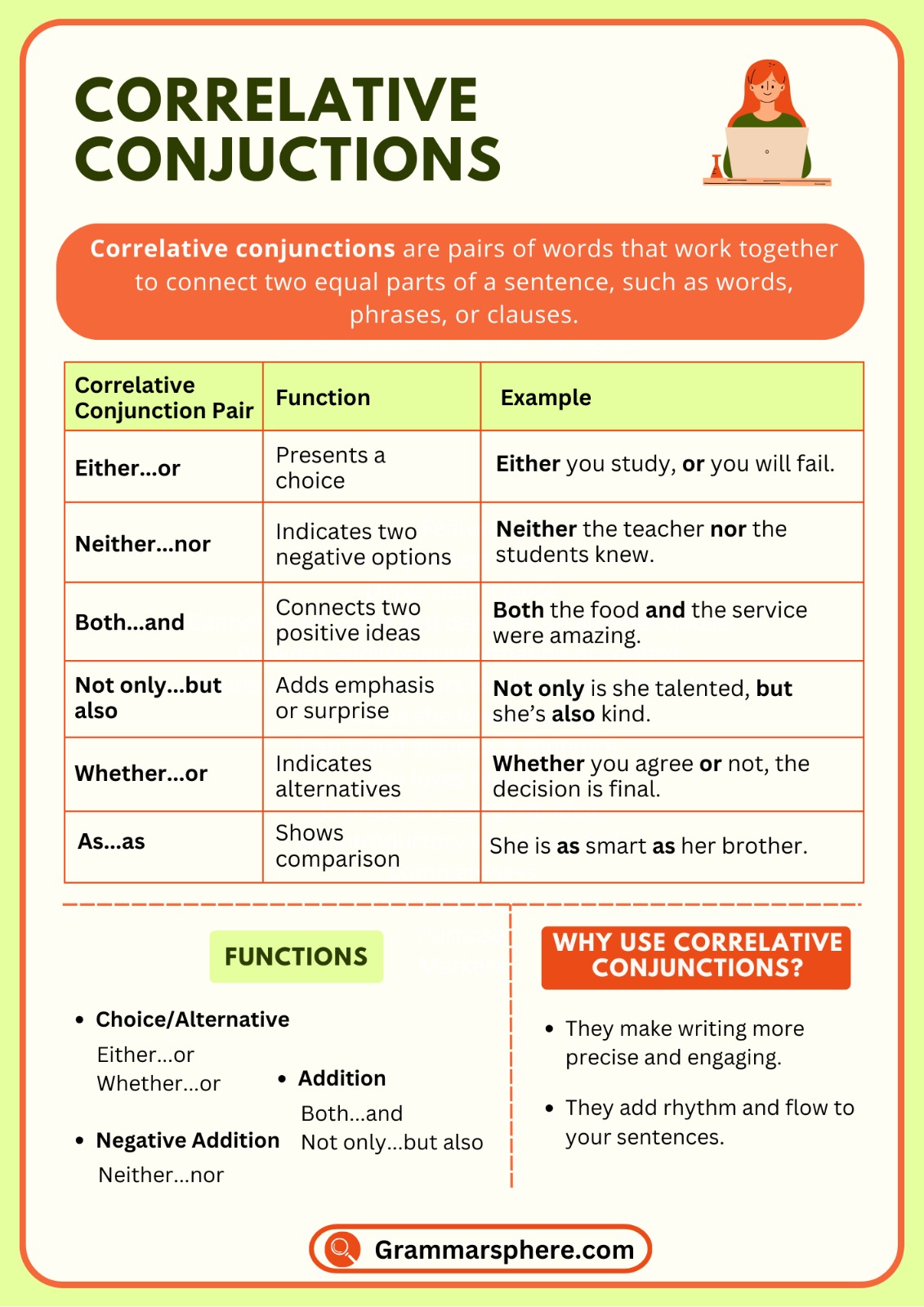
Correlative Conjunction Rules
Correlative conjunctions are used in pairs to connect equal parts of a sentence, such as two subjects, objects, or clauses. To use them correctly, it’s essential to follow specific rules.
1. Use in Pairs
Correlative conjunctions always come in pairs, so both parts must be included in the sentence. Omitting one part makes the sentence incomplete or incorrect.
- Correct: Either you finish your work or you take the day off.
- Incorrect: Either you finish your work.
2. Maintain Parallel Structure
The elements connected by correlative conjunctions should have the same grammatical structure. For instance, if one part uses a noun, the other should also use a noun.
- Correct: She is not only intelligent but also hardworking.
- Incorrect: She is not only intelligent but also works hard.
3. Verb Agreement with the Closest Subject
When correlative conjunctions are used as compound subjects, the verb must agree with the subject closest to it (proximity rule).
- Either the teachers or the principal is attending the meeting.
- Either the principal or the teachers are attending the meeting.
4. Avoid Double Negatives
When using neither…nor, avoid adding another negative word in the sentence, as it creates redundancy.
- Correct: Neither he nor his friends were at the party.
- Incorrect: Neither he nor his friends weren’t at the party.
5. Use for Emphasis
Correlative conjunctions like not only…but also are often used to emphasize ideas. Place them carefully to highlight the intended part of the sentence.
- Not only did she bake the cake, but she also decorated it beautifully.
- Not only the students but also the teacher enjoyed the activity.
Subject-Verb Agreement in Correlative Conjunctions
When using correlative conjunctions to connect subjects in a sentence, ensuring proper subject-verb agreement is crucial. The verb must agree in number (singular or plural) with the subject closest to it, following the proximity rule. Below is a guide to understanding subject-verb agreement with correlative conjunctions.
1. Rule of Proximity
The verb agrees with the subject closest to it when correlative conjunctions like either…or, neither…nor, or not only…but also are used.
- Either the teacher or the students are responsible for organizing the event.
(The verb are agrees with students, the closer subject.)
- Neither the employees nor the manager is available.
(The verb is agrees with manager, the closer subject.)
2. When Both Subjects Are Singular
If both subjects connected by correlative conjunctions are singular, the verb should also be singular.
- Neither John nor Sarah is attending the meeting.
- Either the cat or the dog has made a mess.
3. When Both Subjects Are Plural
If both subjects are plural, the verb must also be plural.
- Both the boys and the girls were excited for the trip.
- Not only the students but also their parents have arrived.
4. When Subjects Differ in Number
When one subject is singular and the other is plural, the verb agrees with the subject closer to it.
- Either the teacher or the students are presenting today.
(The verb are agrees with students, the plural subject.)
- Neither the children nor the parent is ready for the trip.
(The verb is agrees with parent the singular subject.)
5. Using Both…And
When using both…and, the verb is always plural since “both” implies two subjects.
- Both the dog and the cat are sleeping.
- Both the manager and the employees agree with the plan.
Correlative Conjunctions words List
- Both…and
- Either…or
- Neither…nor
- Not only…but also
- Whether…or
- As…as
- No sooner…than
- Such…that
- So…that
- Rather…than
- Hardly…when
- Scarcely…when
- Just as…so
- The more…the more
- The less…the less
- The sooner…the better
- If only…then
- What with…and
- As much…as
FAQs About Correlative Conjunctions
What are correlative conjunctions?
Correlative conjunctions are pairs of words that connect two equal parts of a sentence, like “both…and” or “either…or.”
What is the rule for subject-verb agreement with correlative conjunctions?
The verb agrees with the subject closest to it (proximity rule).
What are examples of correlative conjunctions?
Common examples include “both…and,” “neither…nor,” “not only…but also,” and “whether…or.”
You May Also Like

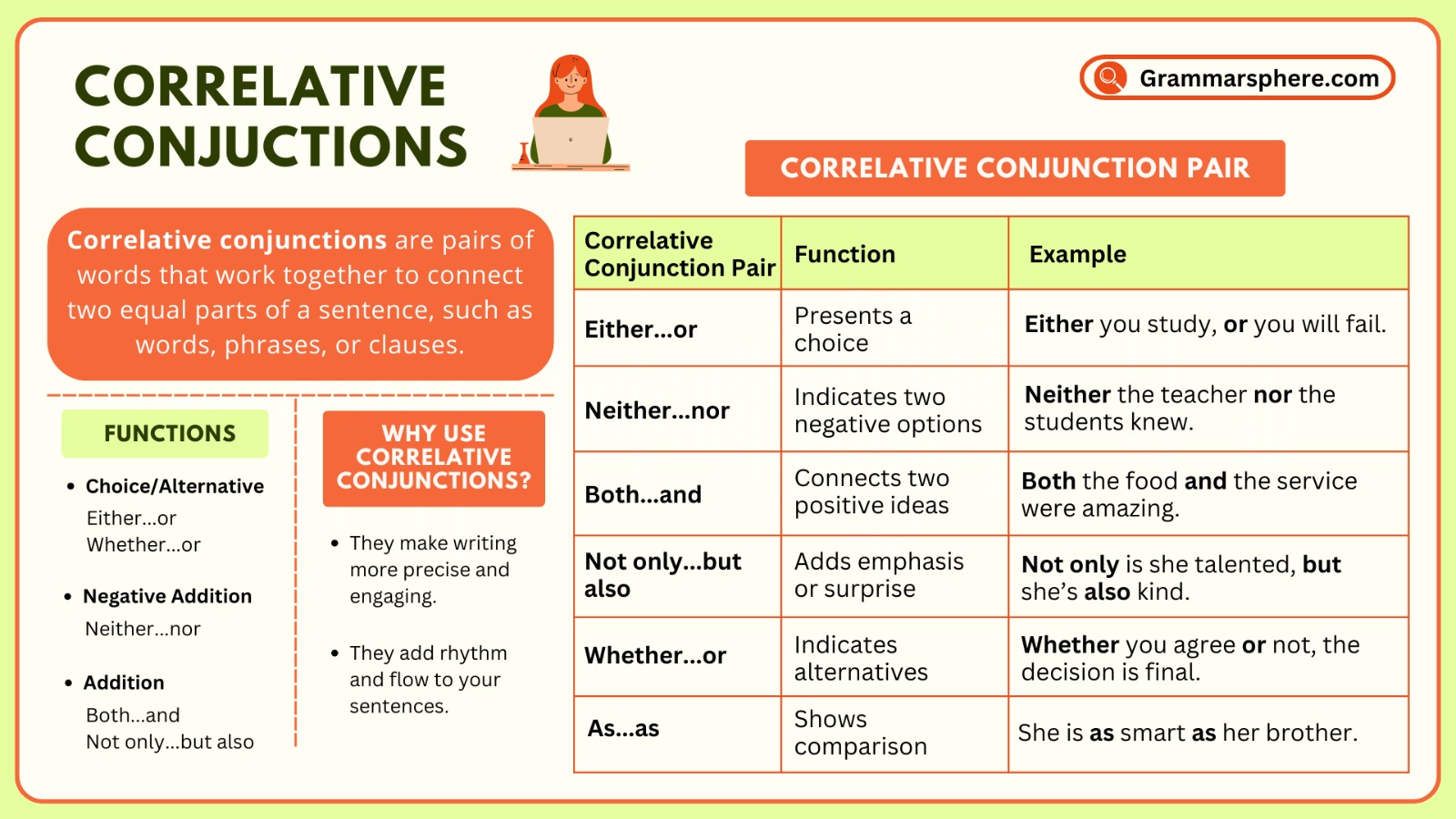
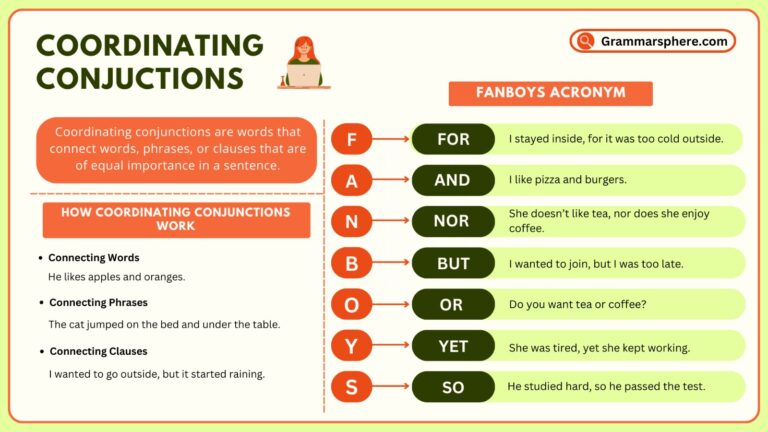
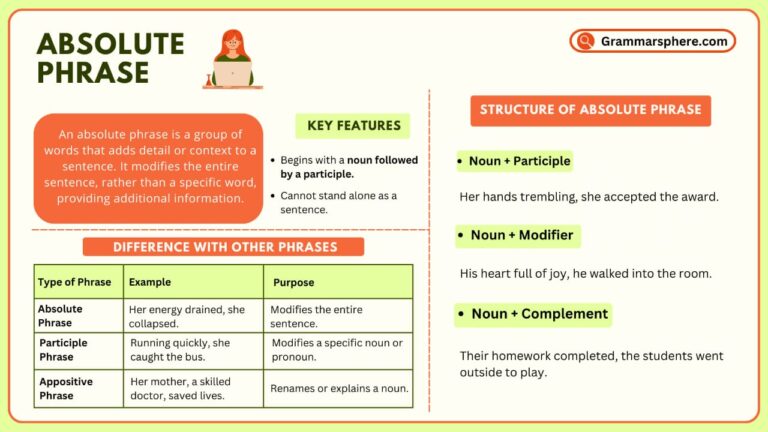
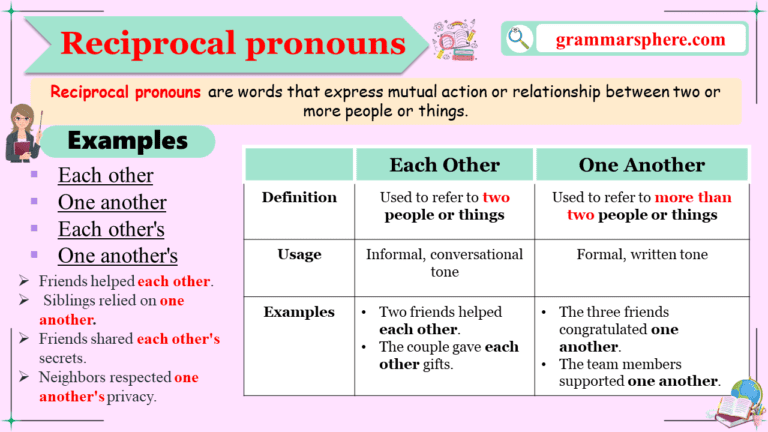
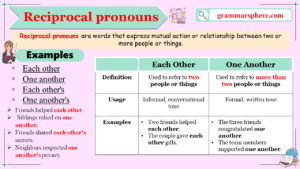
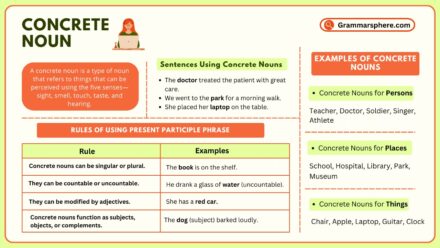
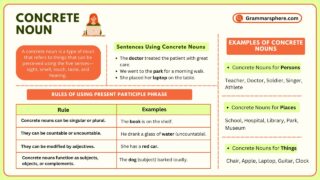
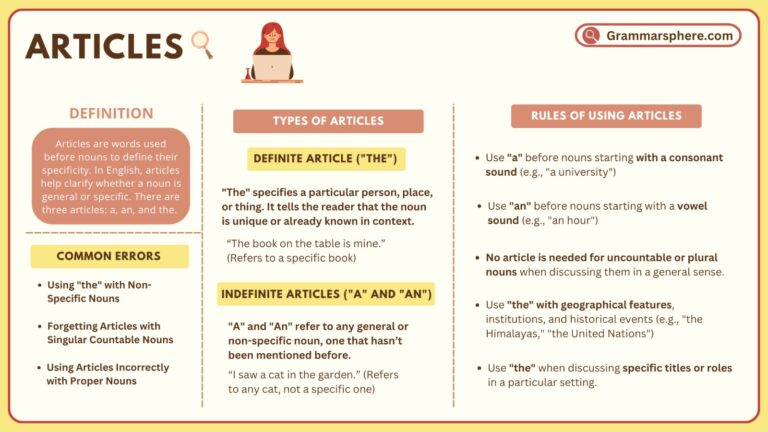
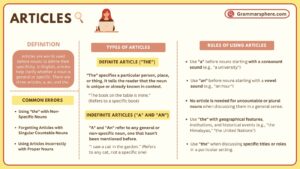
Leave a Comment